One of the most iconic trams in the world sits at the base of Teton Village. Proudly ready to whisk skiers up 4,150 feet to the top of Rendezvous Mountain every day in the winter and bring hundreds of sightseers to arguably the best viewing spot in the valley in the summer. Big Red is a powerhouse and workhorse of a machine that takes a team of dedicated staff to keep it well maintained and safe during thousands of hours of operation.
Like every complex machine, it needs daily, yearly, and scheduled maintenance to remain safe for its riders. This summer, the tram is undergoing its largest scheduled “doctor’s visit” since it was installed with the help of professional teams from around the world. To get a better understanding of what exactly is going on we sat down with Mike Vase, the tram’s lead mechanic.
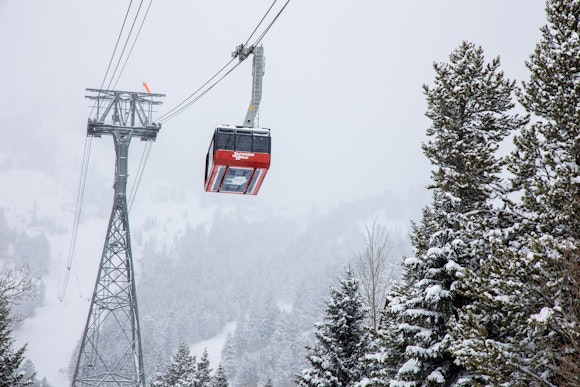
Big Red coming into the village on a cold November day.
1) Tell us a little background on the current tram. Make/model, when it was installed, what makes it unique.
This tram was built between 2006 and 2008. It opened for the first time in December 2008. It was designed by Garaventa and built by Doppelmayr. This tram is about twice the size of the old tram we had in operation for 50 years. It follows the same footprint as the old tram and has a higher capacity and longevity.
2) This tram has a lot of nicknames. What are some common and uncommon ones you’ve heard?
Big Red and the Red Heli are the most popular. I don’t come across many uncommon ones but I’m sure they are out there. Big Red is probably the most common. My favorite is the Red Heli because not only do we move people up the hill but we can move equipment.
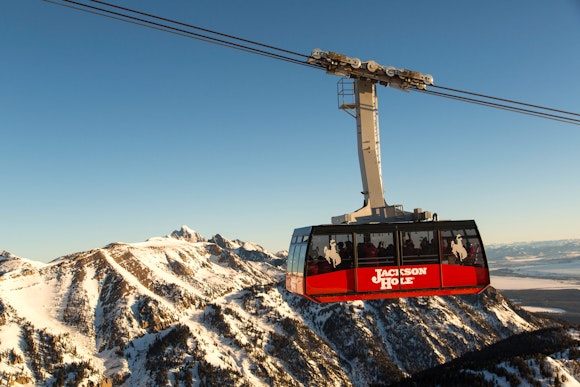
The best views in the valley are from Big Red.
3) Tell us about the day-to-day maintenance needs of Big Red to keep it safe.
When we are in public operation we have a list of morning checks that we go through to get the machine ready for public and ski patrol. Then throughout the day we do multiple checks in our engine room, at the towers and up at the summit. Those day-to-day checks don’t really change and it’s very consistent so that way if there’s something that needs to be addressed we can pick up on it right away. We have scheduled maintenance routines daily, routines weekly, and routines monthly. Then we get into our six-month and annual maintenance which is pretty straightforward. On top of all of that, we have scheduled five-year maintenance and 12 year maintenance and that’s the situation we are in now, our 12 year maintenance.
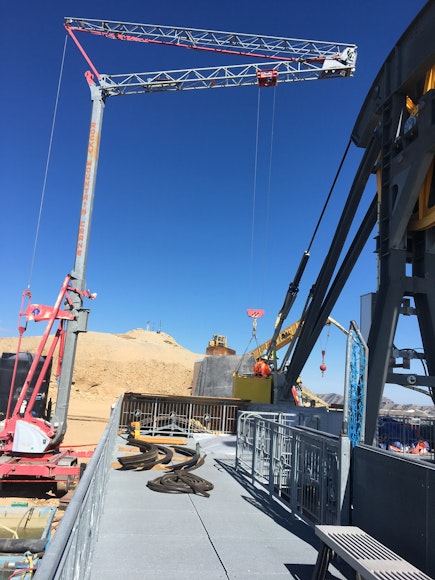
A glimpse of the scope of work at the summit for Big Red.
4) Tell us why the maintenance this summer is different/bigger than in years past.
Basically, at 12-year increments, that’s when we do a significant maintenance project. Once this has been completed the 12 years the clock resets itself. We start back to where we were when we built Big Red. This is the biggest maintenance project we have and we’ve known about it for a long time. It deals with relocating the cables which sounds simple but it’s an endeavor that takes many people, from Switzerland to subcontractors in the United States. This is not abnormal in the tram world, in that all trams do this every 12 years.
5) What is the process of this major maintenance milestone?
This maintenance milestone is called the Tracker Rope Slip. Basically what we’re doing is we’re relocating the cables where they sit on the towers. Those cables go back-and-forth, depending on the location of the Tram, every trip. We’re up there daily looking at the fluidity of movement and freedom of movement greasing in that spot. The engineers at Garaventa tell us in 12 years we need to take that friction point and move it downhill to give it a fresh piece of cable. It’s been designed and engineered so that we have 40 years of cable at the summit. This allows us to move that cable every 12 years.
The biggest process is the first step, detensioning the cable at the summit. This process takes about two weeks to a month and that’s when we bring in the Swiss team. Once it’s detentioned our slip is registered to be moved about 80 feet so we actually detention it about 20 feet first. Then we will finish the rest of the slip, the remaining 60 feet, at the end of the job. While the cable is detentioned it gives us the opportunity to rehab the wood that the cables wrapped around at the summit. It’s a long process that takes about three months to complete before we can finish the track rope slip and retention everything.
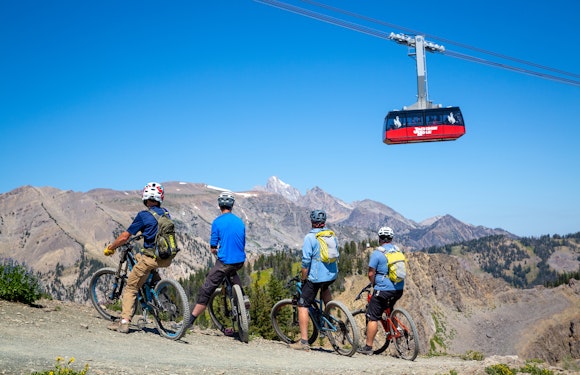
Big Red looks over a few bikers a couple of years ago.
6) How will this affect Big Red in the future?
This whole process is going to add longevity and safety to the whole machine. We’ve been planning this for a couple years and we’re setting ourselves up for this tram to last a legitimate 50 years from install. The whole goal is to solidify safety.
7) How many people are involved with this summer’s work? Where are they from? How many teams?
We have a Swiss and US Doppelmayr team of about six, my JHMR tram crew of five, a Utah based concrete crew of nine, a water filtration team of three, and then five workers from Idaho Falls. That’s just the people who are on the project. This takes our whole mountain operations team to make happen. They mobilized all of the equipment to the summit, continue to bring more machinery to the site, and support with hauling water; and they have been vital to the success so far.
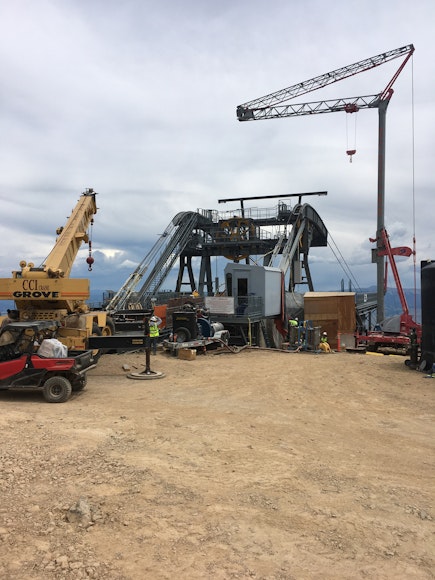
Crews are hard at work getting Big Red ready for the winter.
8) Have there been any surprises with a project this big?
Covid made things interesting. We tried to schedule this a year ahead of time but we couldn’t get the necessary workers or equipment here safely. This summer was the best opportunity to complete the project taking into consideration everyone who is involved.
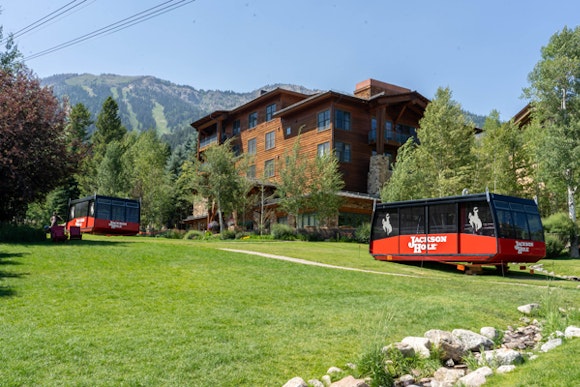
Both trams sitting at the base of Teton Village this summer.
9) It’s pretty cool seeing both trams at the base next to an older tram from the 90’s. When was the last time both trams were off the cables?
The last time these trams saw the earth was when they were shipped here from Switzerland. They’ve been in the air the entire time. This is the first time they have touched ground, and again and that’s by design.
10) Thanks Mike. Just one last question that all of our readers want to know, will the tram be ready for this winter?
You better believe it! I’ll see you on the tram dock by Thanksgiving or whenever the snow allows.